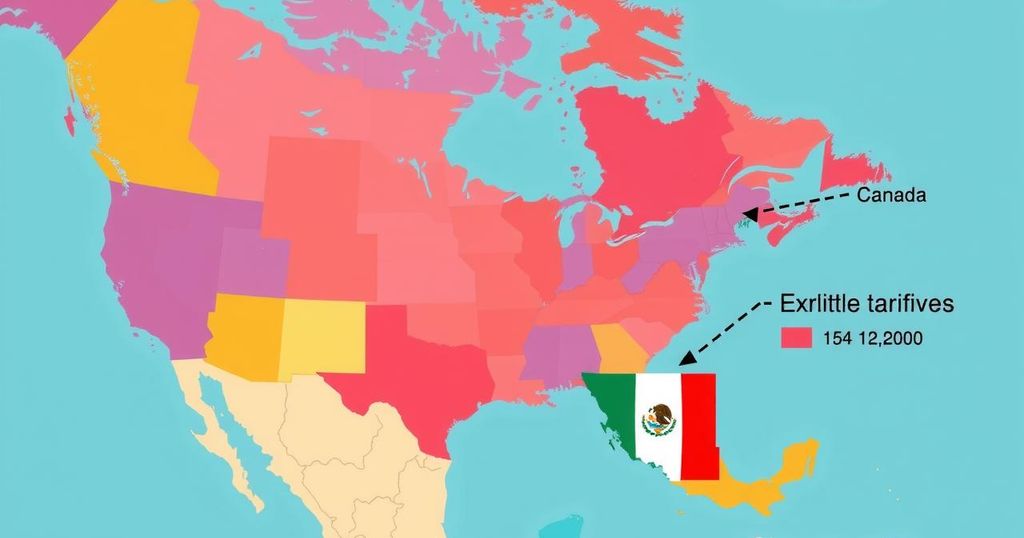Canada and Mexico Exempted from Trump’s April 2 Tariffs Amid Ongoing Trade Challenges
On April 2, 2024, President Donald Trump announced reciprocal tariffs, exempting Canada and Mexico from new charges. While relieved, these nations still face existing tariffs and upcoming levies on specific goods. Significant tariff rates are aimed at various countries, particularly large trade surplus nations like China.
On April 2, 2024, U.S. President Donald Trump announced a series of reciprocal tariffs aimed at several countries, which he described as having “looted, pillaged, raped, plundered” the United States. Notably, Canada and Mexico were exempted from these new tariffs, which began with a baseline rate starting at 10 percent. The announcement brought relief to both nations, allowing them to navigate the tariffs without immediate economic consequences.
Despite their exemption from the new tariffs, Canada and Mexico still face existing tariffs on their imports to the U.S, which include a 25 percent tariff related to fentanyl and 10 percent tariffs on Canadian energy and potash. New automotive product levies are set to take effect shortly after the announcement, indicating that trade relations remain complex.
Under the US-Mexico-Canada Agreement (USMCA), goods entering the U.S. from Canada and Mexico will continue to enjoy exemptions despite the presence of other duties. If negotiations on the tariffs occur, these nations will still need to contend with Trump’s baseline rates affecting numerous countries.
In response to his government’s decision, Canadian Prime Minister Mark Carney stated, “We are going to fight these tariffs with counter-measures. We are going to protect our workers.” Mexican President Claudia Sheinbaum is also expected to provide an official reaction during her upcoming press conference.
It is noteworthy that other nations, including Russia, Cuba, Belarus, and North Korea, were not listed among Trump’s new reciprocal tariff targets due to existing sanctions that restrict trade with the U.S. Overall, the U.S. administration plans to impose varying tariff rates on various nations, with some significant rates targeting countries such as India and China, the latter being faced with a notably high 34 percent tariff due to its large trade surplus with the U.S.
In conclusion, while Canada and Mexico successfully avoided the imposition of new tariffs announced by President Trump on April 2, they remain subject to existing duties and new tariffs on specific products. The complexities of U.S.-Mexico-Canada trade relations continue to develop, reflecting the ongoing impacts of tariffs on both national economies. With plans for counter-measures and responses being formulated, the trade landscape remains a critical area of focus.
Original Source: www.hindustantimes.com




Post Comment